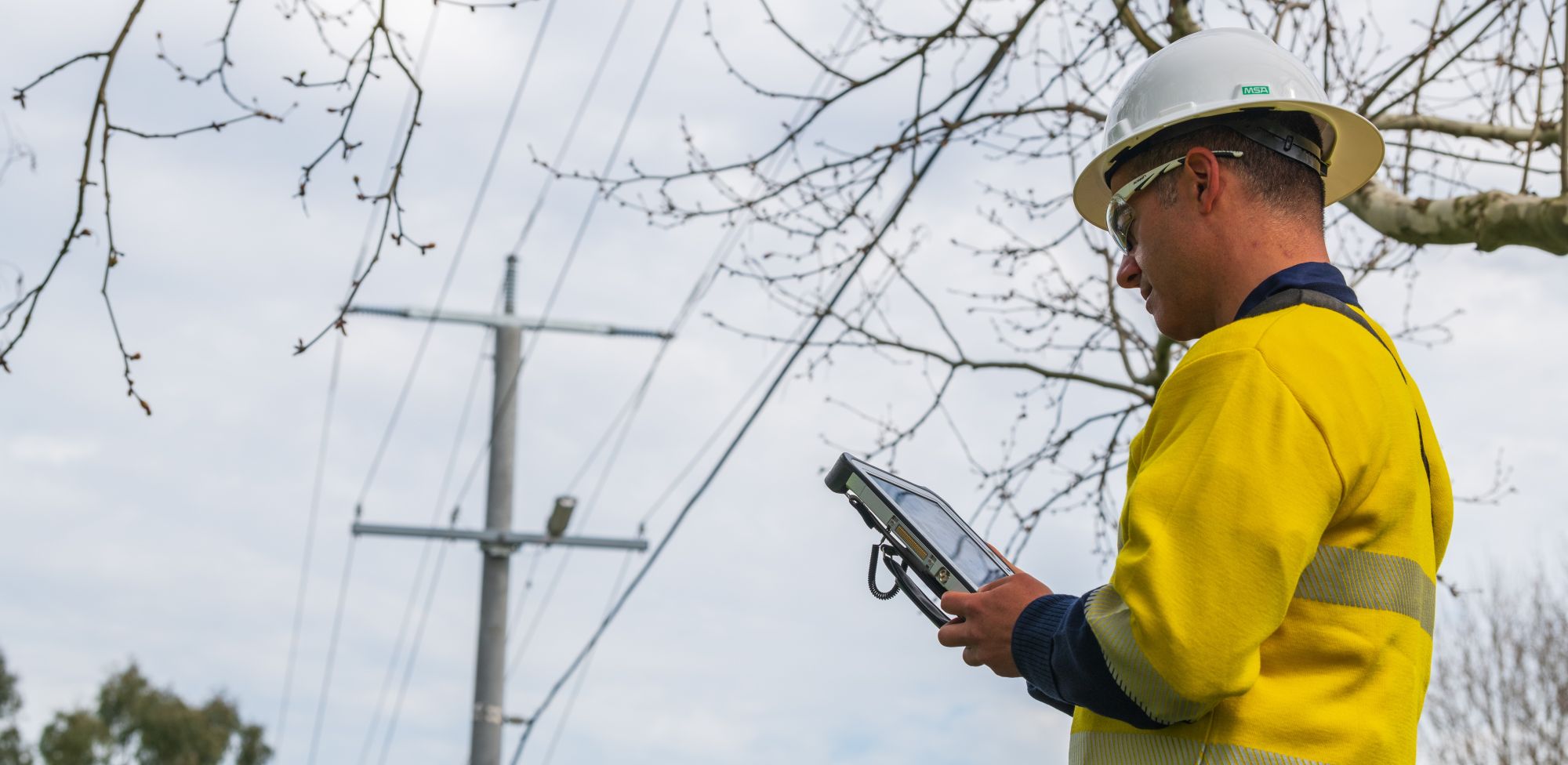Identifying a PAL
PALs begin from the first pole on your property and include the lines, poles and electrical equipment. For more information, download Private electric lines - your responsibilities (PDF, 2.65 MB).
Your responsibilities
As the owner of a PAL, you are responsible for ensuring it is always in safe working condition under the Electricity Safety Act 1998. This includes regular maintenance and tree and vegetation clearing.
Regular maintenance
At least once a year, you should inspect your PAL and the insulated service line that runs to your property. For help identifying any damage or potential safety issues, download our Maintenance Checklist.
We recommend using binoculars to get a clear view of lines, cross arms and poles. For your safety, please have any repairs carried out by a registered electrician.
Tree and vegetation clearing
It’s important to keep your PAL clear of overgrown trees and any other overgrown vegetation. Before adding new plants or trees, consider whether these will impact your PAL in the future. To view our guidelines for planting near electric lines, visit Vegetation management.
Working safely near powerlines
Live powerlines can be extremely dangerous and can cause injury or death. Please be careful when working near powerlines and see Working near lines for more safety information.
What we do
Vegetation management
We have a year-round schedule of vegetation management to make sure trees are clear of powerlines. This work includes:
- clearing vegetation near our powerlines that cross your property
- managing trees on your property that impact powerlines in your street.
If we need to clear trees from your property, we may pass these costs on to you.
Private aerial lines (PAL) inspection
Section 113F(1) of the Electricity Safety Act 1998 requires us to inspect all PALs to make sure they’re safe and working well. We inspect PALs every three years in high bushfire risk areas, and every five years in low bushfire risk areas.
We notify all relevant customers when we will be inspecting PALs – these are lines above the surface of the land on the property they occupy. We do not inspect any section of the PAL after it connects to a building or other structure (not including a pole).
If we find any defects on a PAL on the property, we’ll send the owner a letter explaining what maintenance works need to be carried out.
If you’d like more information about our inspections, please call us on 1300 360 795.
If you have recently had a pole repaired or removed, please complete the PAL rectification form and email it to poeladminteam@ausnetservices.com.au so we can update our records.
Underground replacement
You may be able to request to have your PAL replaced with an underground line. Underground alternatives can include a substation or private or low voltage powerline. If approved, underground replacement costs are shared.
Applications for PAL removal and underground replacements can be made in EnergyConnect. We recommend an electrician completes this on your behalf.
Your cost may include:
- high-voltage extension, including the substation pole (if required)
- tree clearing
- easements
- low voltage underground mains on your property.
We may cover costs:
- to establish the substation, including the transformer for high voltage extension (if required), OR
- for all underground low voltage service cables in the road reserve.
To speak to someone about replacing your PAL with an underground line, please call us on 1300 360 795.

